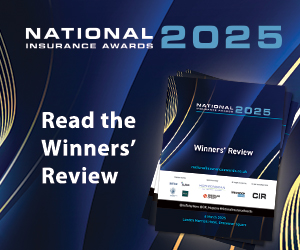Research on the highly virulent H5N1 avian influenza viruses resumed last week after a year-long ban. With the controversial lifting of the moratorium, researchers will now try to increase the transmissibility or virulence of H5N1 to help prepare vaccines and other medical treatments in case of a pandemic. According to analysis from RMS’ infectious disease model, however, pursuing this ‘gain of function’ research increases the chance of a man-made H5N1 pandemic. While the probability of such an event occurring remains low, insurance companies need to ensure they have enough capital to manage the risk.
“Laboratory experimentation remains controversial because of the possibility of creating a super flu that might not have occurred naturally. The H5N1 influenza virus is highly virulent and rapidly mutating, and its evolution, through either natural or laboratory means, could pose the most significant pandemic threat of the modern era,” commented Dr. Maura Sullivan, senior director of LifeRisks at RMS.
RMS has used its infectious disease model to simulate scenarios for pandemics that could result from the escape of a virus from a research laboratory. It estimates that there is a small but significant likelihood of an escaped lab pathogen triggering a global pandemic. Commenting on the implications for insurers, Dr. Andrew Coburn, senior vice-president of LifeRisks at RMS, comments: “In the long run, if this research results in good vaccines, then it could reduce pandemic risk by 30%, but in the short term the research itself poses an increased risk. For risk managers looking to stress test their Solvency II capital requirements, RMS’ model indicates that an additional five per cent in capital may be required to compensate for a possible man-made pandemic occurring as a result of the lifting of the research ban.”
In nature, H5N1 has infected over 600 people globally, typically via direct contact with an infected bird, and killed around 60% of those infected. According to RMS’ analysis, a H5N1 virus that is as transmissible as the 1918 Spanish flu could result in tens of millions of deaths worldwide. Transmissible viruses produced in the laboratory are not yet as deadly as avian flu in the wild, but the new round of research is aimed at achieving this.
H5N1 influenza research currently requires biosafety level three laboratories rather than the maximum security level four. Researchers are resisting upgrading to level four because they argue that it will slow research progress. Historical laboratory-acquired infections demonstrate that biosafety measures occasionally fail, and if a pandemic were to occur from a laboratory escape, there is a wide range of potential outcomes.
“We need to ensure an appropriate level of laboratory safety to balance the increased risk with the public health benefit,” says Dr. Sullivan. “The research community alone should not be solely responsible for regulating practices that could significantly increase infectious disease mortality risk for all. Even a mild epidemic with limited mortality can have catastrophic economic impacts.”
The potential severity of a global pandemic makes it imperative that a full risk assessment is carried out, including the possible threats and benefits of allowing future research, to ensure that research is well-controlled and carried out under the appropriate security levels.
Printed Copy:
Would you also like to receive CIR Magazine in print?
Data Use:
We will also send you our free daily email newsletters and other relevant communications, which you can opt out of at any time. Thank you.











YOU MIGHT ALSO LIKE